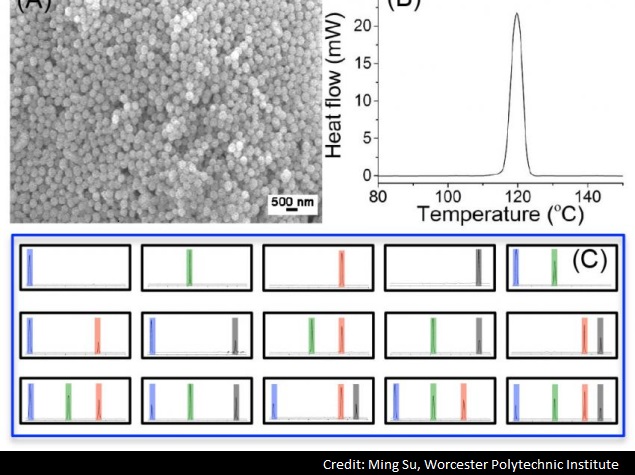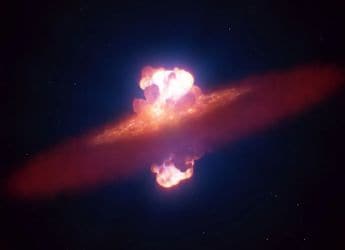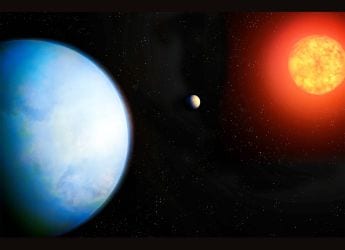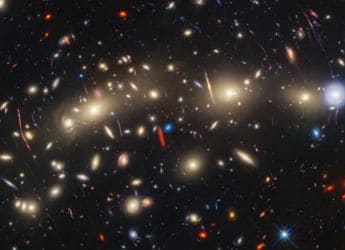- Home
- Science
- Science News
- Invisible Bar Codes With Nanoparticles to Help Thwart Counterfeiting
Invisible Bar Codes With Nanoparticles to Help Thwart Counterfeiting

The new system is based on adding certain types of nanoparticles to materials as part of the manufacturing process that can be read later using a special device.
Bar codes are used to track the movement of merchandise and in some cases, to prove that criminals have been counterfeiting products.
However, printed bar codes are relatively easy to reproduce, thus, criminals can make their own. Researchers at Worcester Polytechnic Institute in Massachusetts have come up with a way to allow for the creation of invisible bar codes that are nearly impossible to replicate.
The idea revolves around several types of metal nanoparticles, each of which has a unique melting point. Mixing the nanoparticles together allows for creating unique thermal signatures.
To use the nanoparticles, manufacturers would simply add them into the mix when creating metals, papers and even fluids, Phys.org reported.
The researchers said the addition of the nanoparticles doesn't change how a material looks, doesn't react with anything in it or impact how a finished product performs.
Reading the new type of "bar code" requires a device capable of performing differential scanning calorimetry (DSC) - a technique based on assessing the difference in the amount of heat required to heat different parts of a sample material.
The researchers said their nanoparticle bar codes could be used with paper, metals, fluids and even drugs.
The research is published in the journal Scientific Reports.
Get your daily dose of tech news, reviews, and insights, in under 80 characters on Gadgets 360 Turbo. Connect with fellow tech lovers on our Forum. Follow us on X, Facebook, WhatsApp, Threads and Google News for instant updates. Catch all the action on our YouTube channel.
Related Stories
- Samsung Galaxy Unpacked 2025
- ChatGPT
- Redmi Note 14 Pro+
- iPhone 16
- Apple Vision Pro
- Oneplus 12
- OnePlus Nord CE 3 Lite 5G
- iPhone 13
- Xiaomi 14 Pro
- Oppo Find N3
- Tecno Spark Go (2023)
- Realme V30
- Best Phones Under 25000
- Samsung Galaxy S24 Series
- Cryptocurrency
- iQoo 12
- Samsung Galaxy S24 Ultra
- Giottus
- Samsung Galaxy Z Flip 5
- Apple 'Scary Fast'
- Housefull 5
- GoPro Hero 12 Black Review
- Invincible Season 2
- JioGlass
- HD Ready TV
- Laptop Under 50000
- Smartwatch Under 10000
- Latest Mobile Phones
- Compare Phones
- Vivo Y500 Pro
- Realme GT 8 Pro Aston Martin F1 Limited Edition
- Huawei Mate 70 Air
- Moto G57
- Moto G57 Power
- Motorola Edge 70
- Moto G Play (2026)
- Moto G (2026)
- MacBook Pro 14-inch (M5, 2025)
- Asus Vivobook S16 (S3607QA)
- iQOO Pad 5e
- OPPO Pad 5
- Noise Diva 2
- Noise Halo 2
- Acerpure Nitro Z Series 100-inch QLED TV
- Samsung 43 Inch LED Ultra HD (4K) Smart TV (UA43UE81AFULXL)
- Asus ROG Ally
- Nintendo Switch Lite
- Haier 1.6 Ton 5 Star Inverter Split AC (HSU19G-MZAID5BN-INV)
- Haier 1.6 Ton 5 Star Inverter Split AC (HSU19G-MZAIM5BN-INV)
-
 Supernova’s First Moments Show Olive-Shaped Blast in Groundbreaking Observations
Supernova’s First Moments Show Olive-Shaped Blast in Groundbreaking Observations
-
 Intense Solar Storm With Huge CMEs Forced Astronauts to Take Shelter on the ISS
Intense Solar Storm With Huge CMEs Forced Astronauts to Take Shelter on the ISS
-
 Nearby Super-Earth GJ 251 c Could Help Learn About Worlds That Once Supported Life, Astronomers Say
Nearby Super-Earth GJ 251 c Could Help Learn About Worlds That Once Supported Life, Astronomers Say
-
 James Webb Telescope May Have Spotted First Generation of Stars in the Universe
James Webb Telescope May Have Spotted First Generation of Stars in the Universe










